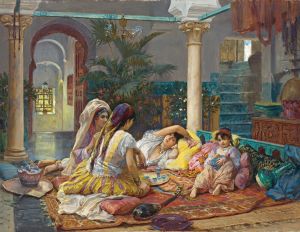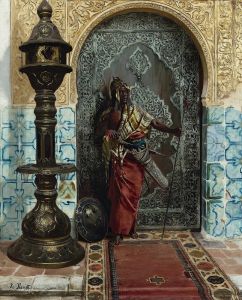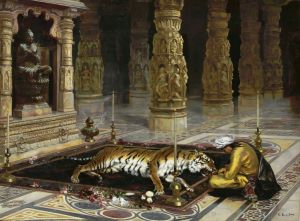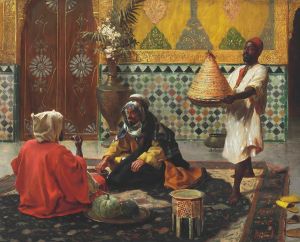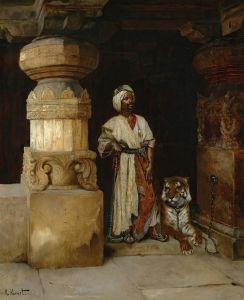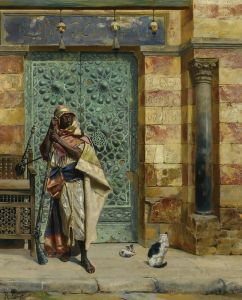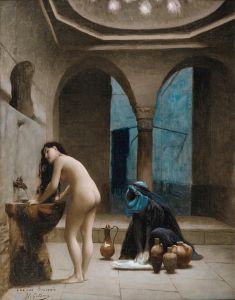
The Hammam
A hand-painted replica of Rudolf Ernst’s masterpiece The Hammam, meticulously crafted by professional artists to capture the true essence of the original. Each piece is created with museum-quality canvas and rare mineral pigments, carefully painted by experienced artists with delicate brushstrokes and rich, layered colors to perfectly recreate the texture of the original artwork. Unlike machine-printed reproductions, this hand-painted version brings the painting to life, infused with the artist’s emotions and skill in every stroke. Whether for personal collection or home decoration, it instantly elevates the artistic atmosphere of any space.
Rudolf Ernst's painting The Hammam is a notable example of Orientalist art, a genre that gained popularity in the 19th century. Ernst, an Austrian painter born in 1854, was known for his fascination with Middle Eastern and North African cultures, which he often depicted in his works. His paintings typically feature highly detailed and idealized scenes of daily life, architecture, and interiors from the Islamic world, reflecting the Western fascination with the "exotic" East during this period.
The Hammam portrays a scene inside a traditional hammam, or Turkish bath, a central aspect of social and cultural life in many Islamic societies. The painting is characterized by its meticulous attention to detail, vibrant colors, and rich textures, which are hallmarks of Ernst's style. The artist's use of light and shadow enhances the sense of depth and realism, drawing the viewer into the intimate setting. The figures in the painting are depicted in relaxed poses, emphasizing the hammam as a place of leisure and communal interaction.
Ernst's work is often celebrated for its technical precision and decorative qualities. He was known to incorporate elements from his personal collection of Islamic artifacts, such as tiles, textiles, and ceramics, into his paintings. This practice lent an air of authenticity to his works, though it is important to note that Orientalist art often reflected a romanticized and sometimes stereotypical view of the cultures it depicted, shaped by the perspectives and biases of European artists and audiences.
While The Hammam is a testament to Ernst's skill as a painter, it also serves as a historical artifact, offering insight into the 19th-century European perception of the Islamic world. The painting exemplifies the Orientalist movement's dual nature: its appreciation for the beauty and craftsmanship of non-European cultures, and its role in perpetuating exoticized and idealized representations.
Rudolf Ernst's works, including The Hammam, are held in private collections and occasionally appear in exhibitions or auctions. His paintings continue to be studied for their artistic merit and their place within the broader context of Orientalist art.







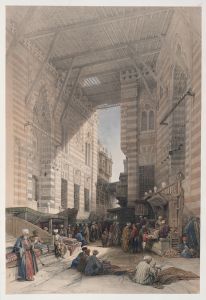
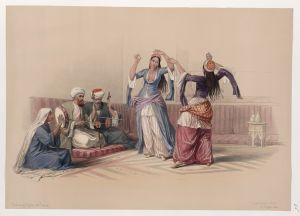
![Street scene in Cairo. [Title vignette, vol. 3]](/imgs/217627/s/david-roberts-street-scene-in-cairo-title-vignette-vol-3-2a84db8.jpg)
